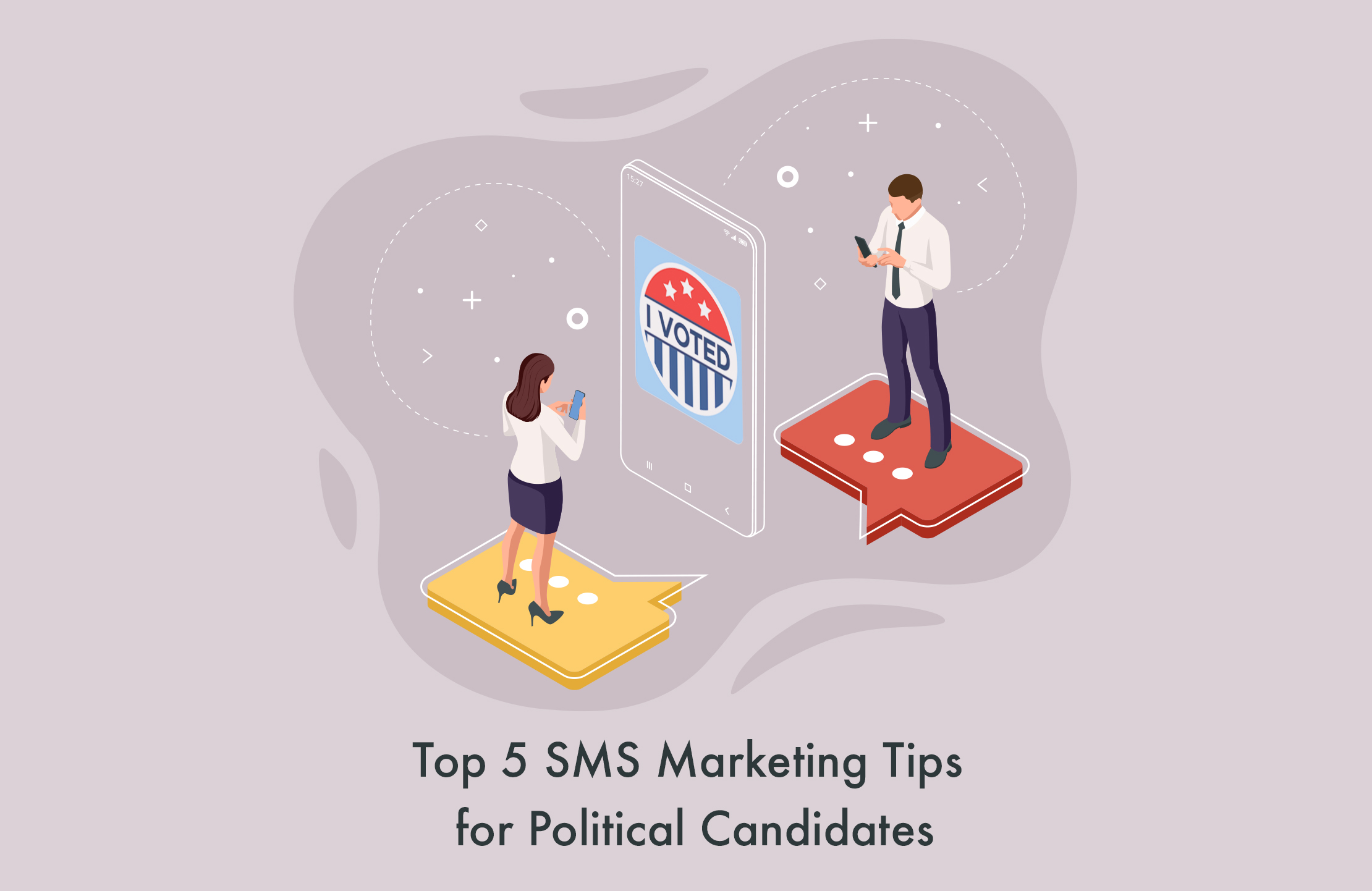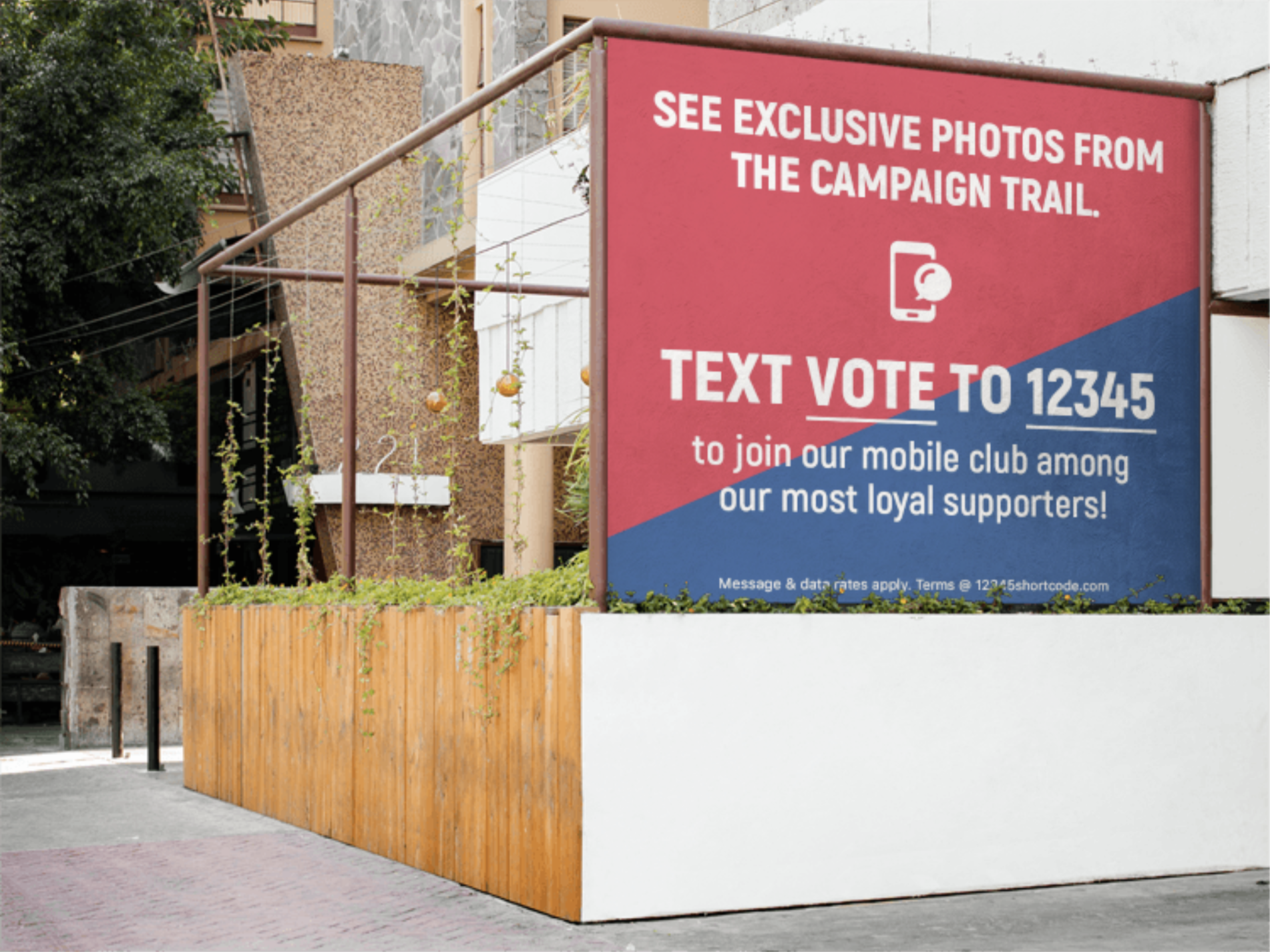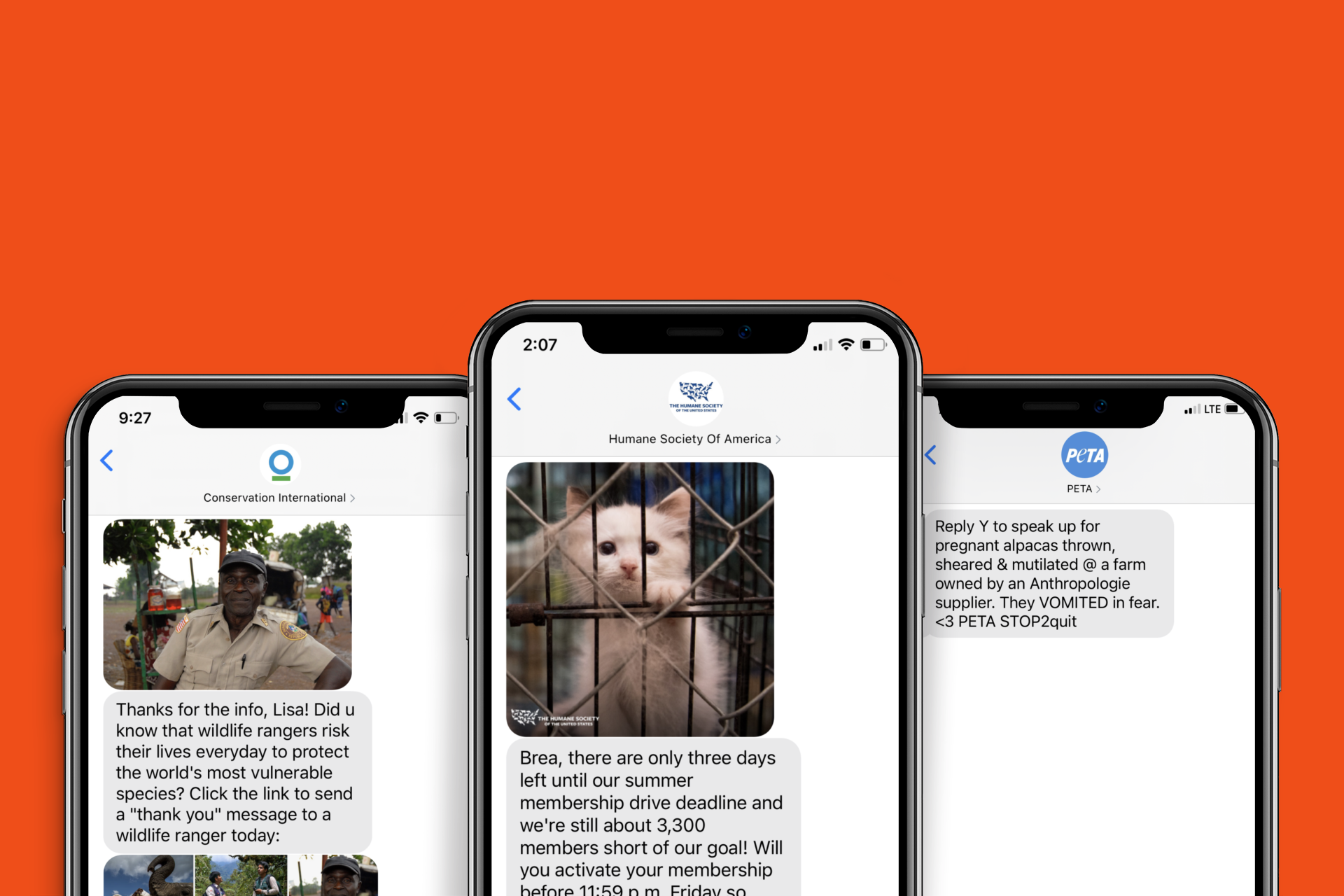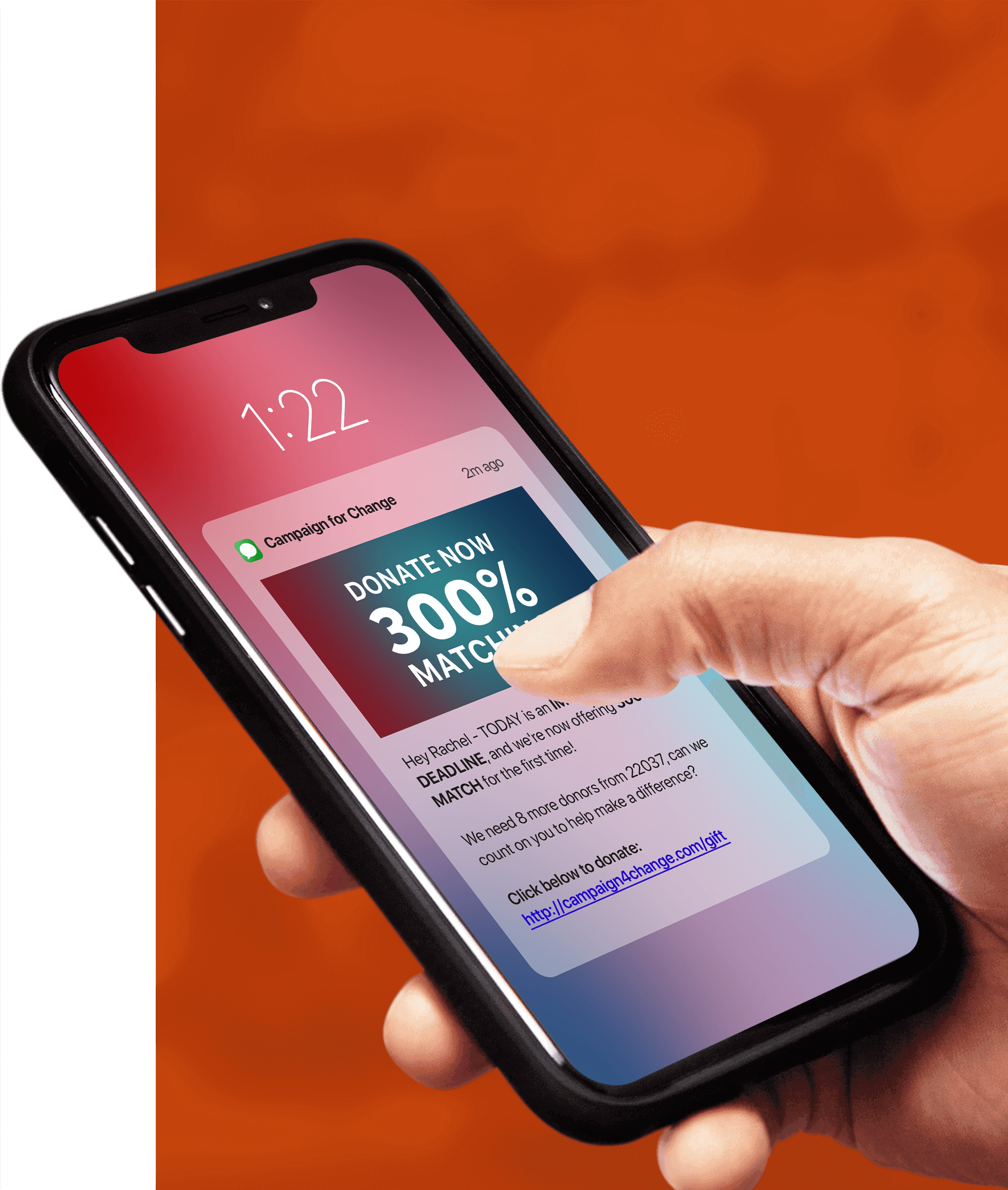
In the 1990s, during the early days of the internet, former California Governor Jerry Brown went over his allotted time in a presidential debate to mention his website’s URL. At the time, many people didn’t even have an internet connection, and if they did, it was probably dial-up. Brown’s comments got some criticism from the other candidates and the audience. His image as Governor Moonbeam was already well in place, and this incident only bolstered it further.
However, it was an early indicator of how important having an online presence would soon be for political campaigns. Today, every candidate from Presidential and Congressional to local city council positions has a multi-layered online presence.
SMS marketing is an integral part of how political campaigns are fought and won.
As times change, so too do the strategies that work best in political SMS marketing. In this blog post, we share our top five SMS marketing tips for political candidates.
Why Political Candidates Should Use SMS Marketing
SMS marketing is highly effective because 99 percent of text messages are opened, and 90 percent of those messages are opened within three minutes. That kind of immediacy is hard to beat among any other marketing strategy, from email marketing to social media.
Because SMS messages arrive in the text message app on a cell phone, the engagement rate is high. On cell phones, message recipients can react immediately. People are comfortable making purchases online for everything from food to car sharing. This comfort extends to making donations online, and it shows. Candidates using Tatango for their political text messaging typically get a 500% ROI on their text message fundraising efforts.
5 SMS Marketing Tips for Political Candidates
With so much opportunity, let’s dive into five tips for SMS marketing success in political campaigns.
#1. Use Short Codes Instead of Long Codes
A short code, preferably a vanity short code, is a five- or six-digit phone number used instead of the ten-digit phone number we normally use for sending and receiving text messages. Short codes are much easier to remember than long codes. Think about it: When was the last time you remembered a new friend’s phone number, let alone the phone number for a political candidate’s campaign?
A vanity short code is one that might translate into a prominent word in your campaign or a number that follows an easy-to-remember pattern, such as 00300 or 11222. Vanity codes cost more to lease, but the investment pays off in memorability and donations.
Once you’ve chosen a short code, announce it prominently in every piece of campaign material, including podium signs, broadcast ads, mailers, yard signs, emails, buttons, and every promotional vehicle.
Use keywords in conjunction with your short code to customize your message to a specific market. For example, “Text NEVADA to 12345“ instantly tells the audience who that message is meant to reach.
Keywords also make it easier to segment your list for later use. For instance, if you initially contacted a person during the senatorial primary campaign, and they opted in, having the list segmented for Nevada residents will make it easier to contact them again during the general election if you need to contact them specifically as part of your GOTV effort.
#2. Build and Grow Your Subscriber List Early
Start building the list early and make it an ongoing effort. The best way to do it is with an opt-in incentive. Recent studies show that 58 percent of consumers are more likely to engage in mobile advertising if it includes an offer. The goal is to make people feel like insiders.
Check out these simple offers:
- Be the first to know about important campaign updates. Text VOTE to 12345 to sign up for mobile alerts.
- See exclusive photos from the campaign trail. Text VOTE to 12345 to sign up for mobile alerts.
- Receive a signed photo from your candidate. Text VOTE to 12345 to sign up for mobile alerts.
Another way to build your list is to integrate with the major campaign and donation platforms. ActBlue, WinRed, and EveryAction integrate with Tatango and make it easy for subscribers to donate from a link in your text messages.
Make sure to use an opt-in with your list so you’re following the Telephone Consumer Protection Act (TCPA) requirements. Legally you’re only required to use a single opt-in, but at Tatango, we suggest a double opt-in for added protection. As a bonus, a double opt-in also further qualifies your list.

#3. Use SMS Marketing to Increase Donations
The Democratic party appears to have been the first to figure out how to use SMS for fundraising. In the third quarter of 2020, Democratic and left-leaning candidates raised $1.5 billion through ActBlue. Rep. Alexandria Ocasio-Cortez raised $18,900,658 in 2020 through small-dollar donations, 78.16% of her total donations. Most donations were made through SMS text messages.
Not to be outdone, Republicans quickly adopted SMS marketing. Rep. Jim Jordan of Ohio raised $12,122,206 in small-dollar donations, 66.19% of his total campaign contributions. In total, Republicans raised $623.5 million in grassroots donations.
The timing of these appeals for donations is key to getting the maximum return. Event-related SMS messaging works well. Envision an SMS text message that goes out on the final night of your party’s national political convention telling recipients about local candidates who need donations to make sure they’re in office to support the President. This type of appeal will do well.
The same is true before and after a debate or any time a candidate’s political opposition makes disparaging comments about them.
#4. Use SMS Text Messaging for GOTV
In the final days of any election cycle, the energy turns to getting out the vote (GOTV). In the 2020 presidential campaign, six out of every 10 messages sent were considered GOTV messages. Ensure people know the location of their polling place, how to cast an absentee ballot, or how to find transportation to the polls.
Given how campaigns can pinpoint hot-button issues and send customized messages to voters, elections are often made and broken in GOTV.
GOTV efforts will become extremely crucial in an election atmosphere where voting opportunities are tightening up. Education on where and how to vote will be key to getting out the vote and winning elections.
#5. Use a Strong Call to Action
It’s not enough to leave constituents with a warm, fuzzy feeling. They need to know how they can best help support your campaign. Ask someone to make a donation, volunteer, or come to an event, whether it’s a neighborhood meeting, a debate, or a meet-and-greet with the candidate. Use phrases like DONATE NOW or REGISTER TO VOTE.
EXTRA TIP! Become Very Familiar with the TCPA
The Telephone Consumer Protection Act (TCPA), enacted by Congress in 1991, was later expanded to cover text messaging (because a text message is technically a phone call). It’s vital to adhere to TCPA requirements in all your messaging. Download our free guide to the TCPA.
Find a Good SMS Marketing Partner
The secret to building a winning SMS marketing campaign is to select a good partner. At Tatango, we have more than 13 years of experience in political SMS marketing, helping political candidates raise more donations, increase voter turnout, and win elections. We want to help you succeed as you gear up for your next election cycle. The sooner you start building your SMS marketing list, the more votes and donations you can secure. Schedule a chat with an SMS marketing expert at Tango today.

